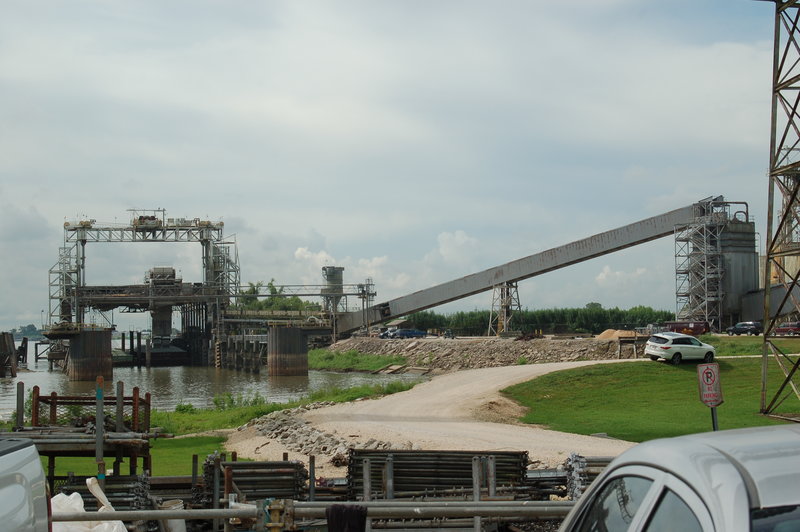Last week I was part of a tour of inland waterways facilities sponsored by the Waterways Council Inc. The aim of the exercise was to get the local press and its readers up to speed on the economic importance of the Mississippi River system and what needs to be done to keep it functioning properly.
Deb Calhoun, WCI’s senior vice president, told me, “Well, I know you’ve heard all this before.” But since I grew up in New Orleans, she brought me along anyway in case Apple’s favorite daughter, Siri, lost her way.
Over a two-day period, we visited the Inner Harbor Navigational Canal, the Port of New Orleans, the surge barrier built by the Corps of Engineers to keep hurricanes like Katrina from flooding the city, Cooper T. Smith’s Crescent Towing, and Cargill’s export grain elevator in Westwego, La. Fact is, the only place I had been before last week was the port.

Grain products rarely stay in Cargill's grain storage facility for more than three or four days. Ken Hocke photo
Cargill’s facility is pretty interesting — and imposing. You don’t realize how big it is until you’re standing in the middle of it. It’s the only grain export facility in the Gulf region with two ship berths and two barge berths. Leased from the Port of New Orleans, the grain elevator’s dock measures 1,800'x130' with a draft of 45'. It operates around the clock.
You like numbers? Here’s a few more: the facility has a storage capacity of 4.7 million bushels and can handle 450 million bushels annually. Only 5% of the grain comes to Cargill’s Westwego elevator by rail. The rest comes by barge, 4,000 to 5,000 each year. Total employees, 129.
How does it work? Here’s a simple explanation: Grain is transported by barges from farms mostly in the Midwest and are dropped off at Cargill’s fleeting facility across the river from the grain elevator. Barges, usually two at a time, are brought over by fleet towboats when called, unloaded onto the facility’s impressive belt system and delivered to the storage facility. Within three to four days, the corn, soybeans, or other grain products are washed, dried, inspected by the Department of Agriculture and loaded into ships for export.
The importance of staying on schedule is vital. Cargill makes arrangements weeks in advance of delivery. If a delivery is delayed by high or low water or the Coast Guard closing the river because of an accident, all the shipments behind it are pushed back as well. Then the ship sits at the Cargill dock waiting to be loaded. That costs money.
I found the Cargill facility to be clean and efficient. You hear about the importance of safety, but these people practice what they preach. The tour helped me to better understand how the system works.
My thanks to John Kimmel and Sean Ryan and everybody at Cargill, and to Deb Calhoun and WCI’s director of government relations, Tracy Zea.





